
Sanborn Fire Insurance Map depicting the “O. H. Smith and Bro. Pottery,” 1890. The pottery is at the top center of the map.
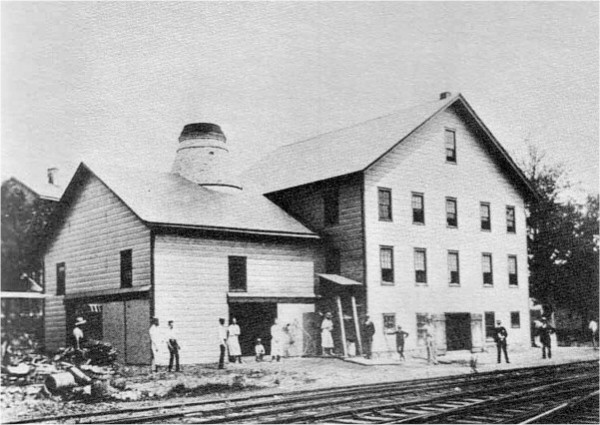
Photograph of the Lehigh Valley Pottery, ca. 1890. (Courtesy, Raritan Township Bicentennial Committee).

O. H. Smith Water Cooler and Filter, United States Patent Office Drawing No. 494901, April 4, 1893.
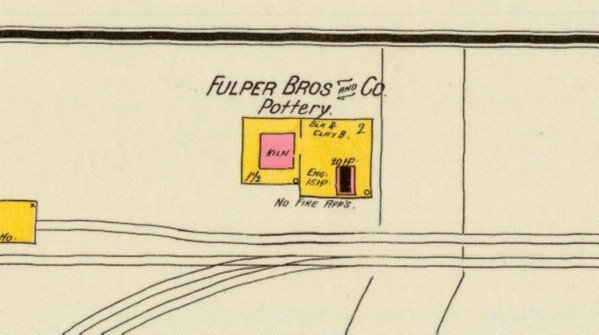
Detail from a Sanborn Fire Insurance Map, illustrating “Fulper Bros and Co. Pottery,” 1896.

Water cooler sherd, Smith/Fulper, ca. 1888–1898. Alkaline-glazed stoneware. Mark: impressed “. . . TER COOLER, / . . . 5, 1886” (All photos, Michael F. Murphy.) The date likely reflects a patent date for the design of Thomas C. Smith’s water cooler, which was granted on May 25, 1886. Although this date predates the opening of the original pottery (1888), the design was most likely in production for several years.
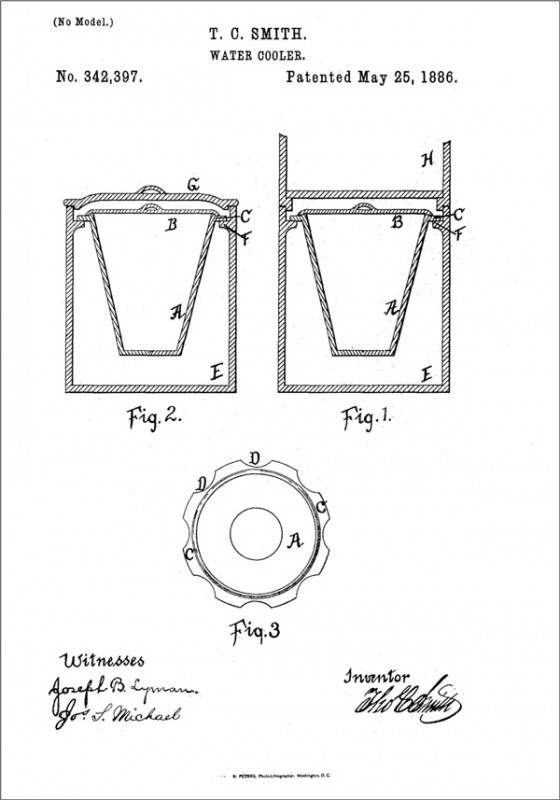
Thomas C. Smith Water Cooler and Filter, United States Patent Office Drawing No. 342397, May 25, 1886.
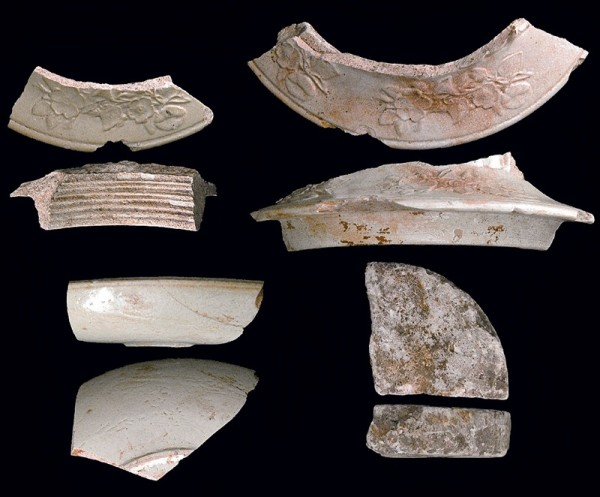
Water cooler sherds, Smith/Fulper, ca. 1888–1898. Alkaline-glazed stoneware. The top row shows two views of water cooler lid/cap sherds with molded floral decoration and internal threading to hold the filtering stone. The bottom row illustrates two views of a basal dish used for supporting the ice, and a fragment from a circular filtering stone.
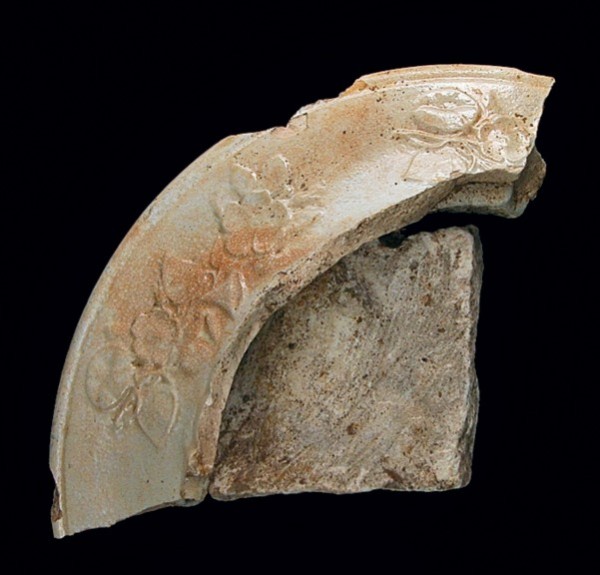
Water cooler lid/cap sherd and a filtering stone/slab, Smith/Fulper, ca. 1888–1898. Alkaline-glazed stoneware, with embossed floral decoration. The image shows how the filtering stone/slab fit against the lid.
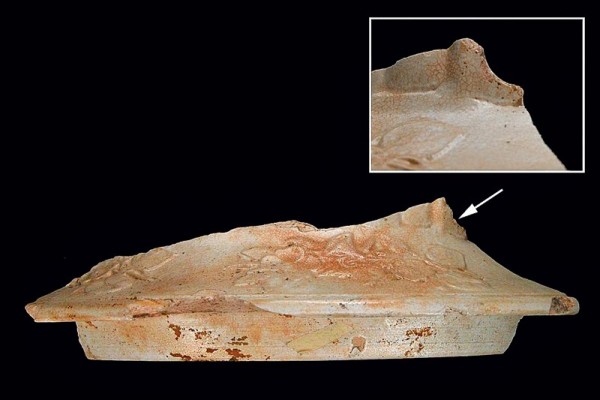
Water cooler lid/cap sherd, Smith/Fulper, ca. 1888–1898. Alkaline-glazed stoneware. A partial water supply hole is indicated by the arrow and is shown in close-up view. A threaded ring was positioned in the hole and secured with a nut. A threaded plug with a nozzle was screwed into the ring, and a flexible tube was attached to the nozzle to fill the cooler with water above the filtering stone/slab. This sherd is different from Smith’s patented design, which shows the water supply hole located farther up the lid/cap positioned directly in the center, suggesting either a design change by Smith or that this might be a Fulper product.
